#josep maria martí
Text
bunny bandaids and forehead kisses – jmm21
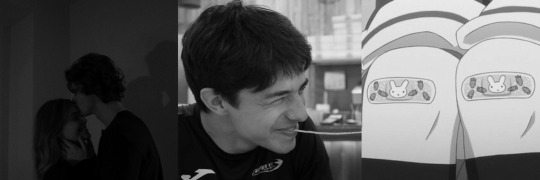
your boyfriend is tough when he's out on track – but not as much in real life.
genre: fluff fluff fluff
pairing: reader x pepe marti
warnings: mentions of a scrape and tiny bit of blood but that's it
word count: 1k
requested: hm not really but the ppl have been asking for pepe fics so 🤭
author's note: hello hello!! finallyyy posting this :) loved writing abt him, and will definitely write more of these short types of fics for him again in the future. thanks for all of the love and the pepe asks, giving me so much energy <33 and big shoutout to my fave cutie @norrisgrl for proofreading the spanish 🫶🫶 hope u all enjoy reading !!
"big breaths now, okay?"
your voice is soft and low, eyes following the way the antiseptic pours onto the rag you're holding. pepe nods, inhaling deeply through his nose as you take his wrist on one of your hands, holding his palm up. you think he's prepared, but when the rag meets his still bleeding skin, his eyes squeeze shut and he can't help but hiss. you let out a chuckle – nothing about his injury is funny per se, but there's something so cute about your usually so tough boyfriend acting like this.
when he crashes a car at several hundred kilometers per hour, there's no issue. he'll walk away without even looking back.
but when he falls onto the ground and scrapes his hand on the asphalt while playing with his five-year-old cousin, he's like a baby. he needs your help instantly.
you're both at pepe's grandparents' house for the weekend, for you to get a chance to meet his extended family for the first time. you had been chatting with his mother and aunt out in the sunshine when pepe came over to you, showing off his hand and asking if you could help him out. you obviously couldn't help but agree to clean him up, knowing that he's way too clumsy to fix it by himself.
so here you are in one of the bathrooms of the house, with pepe propped up on the lid of the toilet as you're crouched down next to him with the supplies you've managed to find in the cabinets. you've gotten the tiny rocks and most of the other dirt out of his skin already; now you just need to clean it properly so it doesn't end up infected, since an infection would be a complete nightmare when he needs to be wearing those stuffy racing gloves for hours upon hours.
pepe lets out a small groan when you press too hard on his skin, face twisting in pain. "sorry, baby," you say, your free hand coming up to caress his cheek. "just a little more now…"
just as you're about to brush his cut with the rag again, the sound of the door behind you creaking open meets your ears. when you look over your shoulder, you find pepe's cousin peeking in through the crack in the door.
"marta," you hum, plastering a soft smile onto your lips. "do you want to come in?"
the girl stays quiet and doesn't move an inch, seemingly not daring to even open the door enough to stick her head in through it. pepe lets out a short sigh. "primita, come here."
the little girl would never disobey her favorite cousin, so it doesn't take long before she waddles up to him. "pepe," she whines, a pout prominent on her lips. your boyfriend's hands reach for her sides, lifting her up easily and placing her down sideways on one of his legs.
"what is it, hm?" he asks, eyes soft when he looks down at her. she's staring at the ground, feet swinging in the air, a worried expression on her face.
"i'm sorry for… hurting you..." marta is already teary-eyed when pepe tilts her chin up and makes her look at him. he shakes his head instantly.
"cariño, you didn't hurt me, okay?" his hand moves from her chin to wipe away her tears with his thumb, before wrapping his arm around her back to hold her close. "just like i told you out there, i'm fine. i promise." her pout still hasn't disappeared and she doesn't seem convinced, so your boyfriend holds up his bruised hand to her. "look, it's just a little scrape. and besides, i've got auntie y/n here to help me out."
her gaze darts to you. "are you a doctor?" she asks, seeing the rag and bottle of antiseptic in your hands.
your eyes flicker between marta and the smirk on pepe's lips, and you can't help but nod. "sometimes, yes." anything to ease her mind right now. "i just need to clean him up a little so it... feels better."
the way she bats her eyes up at pepe makes his heart melt. "does it hurt?"
"not if you hold my hand."
the boy holds his uninjured hand out to her, and she instantly places her own much smaller hand in it. he wraps it around hers, giving it a squeeze, before nodding to you that he's ready again. this time, pepe only winces slightly but stays otherwise calm when you clean the little cuts on his palm – the bond between the two of them apparently really is that strong.
when he's finally all cleaned up, you begin looking through the cabinet for some bandaids. "okay, we have..." you start, pulling out three boxes. "regular bandaids, spiderman bandaids, or," you look up at marta with a grin. "bunny bandaids."
"bunnies!"
you've pulled it out and ripped off the wrapper of the bandaid before pepe can even begin to interject, and you hold it out to the little girl. "can you put it on for me?" you ask and she nods, her eyes twinkling as she grabs the bandaid.
you briefly shift your focus to discard the wrapper and put all of your supplies into the cabinet again, and you turn back just in time to see your boyfriend lean down, pressing a sweet kiss to marta's forehead. "thank you, cielo," he says, before glancing up at you. "and thank you."
with his free hand, he reaches forward to the back of your neck, pulling you down to his level. then, he places a kiss to your forehead too, a big smile on his lips when he pulls away and looks between you and marta.
"mis chicas favoritas."
#pepe marti#pepe martí#josep maria marti#josep maria martí#f2#formula 2#formula two#campos racing#pepe marti x reader#pepe marti x you#pepe marti x yn#pepe marti x y/n#pepe marti fluff#pepe marti scenario#pepe marti fanfic#pepe marti fic#f2 x reader#f2 x you#f2 x yn#red bull junior team
119 notes
·
View notes
Text
"El sentido de la perfección de un cellista es imposible en la viola"

[Johanna Rose con su nueva viola de siete cuerdas. / JUAN CARLOS VÁZQUEZ]
La violagambista germano-sevillana Johanna Rose graba para su instrumento un álbum que incluye dos suites para cello de Bach
Catorce años lleva ya en Sevilla Johanna Rose, música de Bremen, que se atreve ahora, espoleada por el aislamiento provocado por la pandemia y el tiempo libre que generó, a publicar un álbum por completo en solitario, el primero de su carrera. Armada con una viola de siete cuerdas recién construida para ella por Robert Louis Baille, lutier asentado en Sevilla hace años, afronta las dos más complejas Suites para violonchelo solo de Bach, que rodea de música de los dos Sainte-Colombe, padre e hijo.
–El álbum viene anunciado por siete vídeos un tanto especiales sobre la concepción y producción del álbum.
–Fue una idea de Carlos Pineda. Yo le había pedido un vídeo puramente musical, que me cogiera en el estudio de grabación tocando o algo así. Pero él me decía que eso no era interesante, que la gente quiere ver otras cosas. Así que me convenció para hacer una serie de videos que mostraran todo lo que conlleva una producción de este tipo, que no es sentarse y grabar y va a salir un disco. Me propuso hacerlo en siete movimientos, que venía bien con las suites en seis movimientos más uno añadido. Yo tenía mis dudas, porque pensaba que a quién le va a interesar una sesión de fotos o cómo doblo la ropa en casa, pero me convenció y lo hicimos.
–Los guiones son suyos...
–De los dos. Él me proponía tipos de escenas que pensaba interesantes y se pasaba el día conmigo. El primer video por ejemplo es un día normal en la Alameda. Los textos están lógicamente redactados por mí, no son improvisados.
–Y todo ello para llegar a Bach...
–Me di cuenta de que no había hecho mucho repertorio para viola sola, porque me gusta tocar con gente. Pero había alguna propuesta de concierto en solitario por streaming, empecé a leer muchas cosas, y la verdad es que no veo muy atractivo el repertorio de viola sola para un concierto entero. En cambio, las Suites de Bach me encantan, escucharlas y ahora tocarlas. Había mucho tiempo para trabajarlas, necesitaba un proyecto así.
–La 5ª y la 6ª suites son las más difíciles y las más largas, la 6ª es agotadora…
–Sí, la 6ª es agotadora desde el preludio. Cuando lo terminas ya estás agotada [risas]. Pero son también las dos que más me gustan, las que tienen algo especial. La 6ª se puede tocar en re mayor y funciona muy bien. Los cellistas clásicos tampoco la tocan tal cual, porque está escrita para un violonchelo de cinco cuerdas. La 5ª hay que trasponerla, suena mejor en re que en do. En el Preludio de la 6ª hay también que cambiar varias cosas, sonará un poco distinto a quienes estén acostumbrados a escuchar el original en cello.
youtube
–Y acompaña con los Sainte-Colombe para un disco de concepción circular.
–He empezado con Sainte-Colombe el padre, porque quería grabar algo de viola, para que el oyente se haga una idea del sonido, es como tomar un aperitivo en una comida. Así que toco un preludio en re menor para enmarcar la suite de Bach en la misma tonalidad, y luego al final de la 6ª Suite de Bach, que está en re mayor, brillante, alegre, vuelvo a la depresión de la chacona en re menor para cerrar así un poco el círculo.
–Esa tonalidad de re menor da el tono al disco...
–En este manuscrito de Sainte-Colombe hay muchos preludios, todos en re menor; el que he escogido para abrir el disco para mí es el más bonito de todos. La de re menor es una tonalidad ideal para la viola, los armónicos funcionan muy bien, hay muchas cuerdas al aire que se pueden utilizar. Por ejemplo, todo el libro de Abel está en re menor y mayor…
–¿Por qué sintió la necesidad de una viola nueva, de siete cuerdas, para tocar a Bach?
–En realidad no para tocar a Bach, porque la séptima cuerda sólo la necesito para la Allemande de la 6ª suite. Pero Sainte-Colombe no se puede tocar sin esa séptima cuerda. Además detrás hay razones que tienen que ver con la sonoridad. Quería un instrumento con armónicos más amplios, que pueda defenderse bien tocando sola. Para mí la viola de seis cuerdas, con su sonido directo, funciona perfecta con acompañamiento, y la de siete, que tiene un sonido más redondo, es ideal para tocar sola.
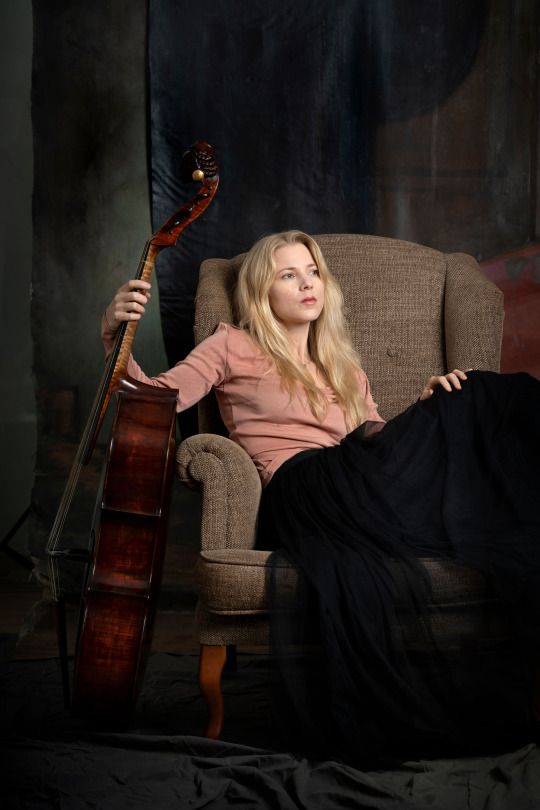
[Johanna Rose en foto promocional. / LAURA LEÓN]
–¿Cuando encargó esta viola había decidido ya lo que quería tocar?
–Sí, absolutamente. Optamos por una viola con idea ya un poco de cello, con el fondo abombado. Igual que Sainte-Colombe se atrevió a añadir una séptima cuerda, yo he optado por hacer un instrumento que muchos pueden decir que históricamente no existió. En realidad, todo lo que hemos usado está documentado que existía en instrumentos del tiempo, pero no es copia de ninguno en particular. Hay cosas prácticas que hemos tenido en cuenta, como los bordes. Las violas sin bordes a veces se mueven mucho en los conciertos. Para hacer cosas difíciles en registro muy agudo como la 6ª suite de Bach, necesitaba más estabilidad: si ya de por sí es difícil afinar los agudos, si te falta estabilidad es una lotería.
–La viola está fechada en agosto de 2021 y la grabación es de noviembre. Muy cerca, ¿no?
–Ha sido un poco arriesgado grabar sólo tres meses después de fabricar el instrumento, sí. Ahora estoy más cómoda con él, el instrumento está más abierto; además, le he cambiado varias cosas, el puente es el tercero, no es el de la grabación. He ido ajustando cosas.
–¿Sigue usando su otra viola, la de seis cuerdas?
–Sí, para tocar en consort el sonido ese directo es mejor, pero el de esta de siete se está abriendo y la he utilizado ya para cosas que en principio no serían adecuadas. Está bien tener varias opciones, como los clavecinistas, un clave italiano y uno francés.
–¿Lo más difícil de las transcripciones?
–No me he sentado para escribirlas. Están en mi cabeza. Tengo cosas apuntadas en la partitura, pero no las he escrito.
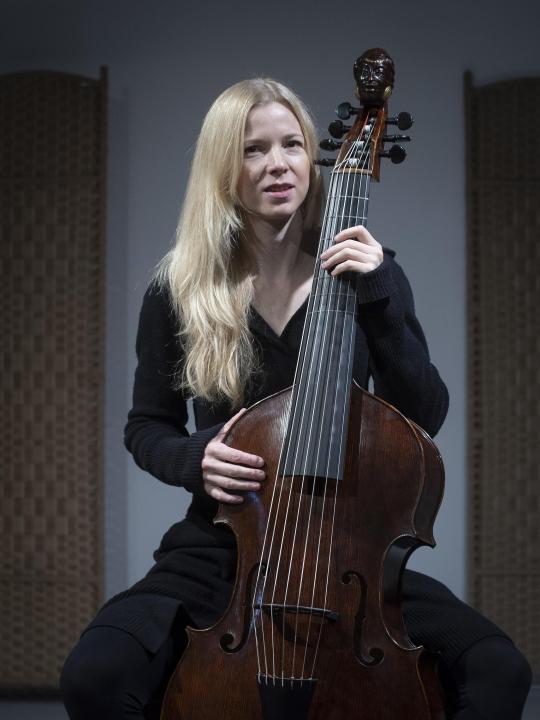
[En el estudio justo antes de esta entrevista. / JUAN CARLOS VÁZQUEZ]
–¿Y cuándo se sienta con qué partitura se pone?
–Depende, la de cello original a veces. Hay una transcripción de Paolo Pandolfo que está editada y está muy bien. También la miro y la uso a veces, pero mi propia transcripción la tengo en la cabeza. Tampoco las he tocado tanto en concierto
–¿Hay diferencias cuando las toca?
–Sí, seguro, en los arcos, sobre todo, que he ido evolucionando y lo toco diferente. Algunas cosas están muy fijadas y otras son libres.
–En uno de sus vídeos promocionales habla de vencer inseguridades, ¿siguen apareciendo?
–Siempre. Más con un repertorio así. Inseguridades musicales, técnicas... Meterte con un repertorio así te las crea, porque hay tantas grabaciones buenísimas de grandes cellistas. Y con la viola es mucho más difícil que con el cello. En el cello queda todo mejor. El sentido de la perfección que puede tener un cellista es imposible en la viola, no se alcanza nunca, porque siempre hay pequeñitos problemas. Para empezar el cello está afinado en quintas, lo que ya le da una estabilidad, y luego las cuerdas del cello moderno son mucho más estables también que las que usamos nosotros.
–¿Qué grabaciones de las Suites le gustan especialmente?
–Me gusta mucho una muy reciente de Alisa Weillerstein. Su interpretación es muy romántica. Queyras también me gusta. Y me gustan mucho las grabaciones de Mischa Maisky (hay dos) y la de Rostropóvich. Son muy clásicos, todos con instrumentos modernos, pero me gustan así. También me gusta mucho la de Sergey Malov con el violoncello da spalla, muy distinta, muy barroca, muy rápidos los tempi.
youtube
–¿Qué aporta su Bach?
–Para mí lo más interesante es la sonoridad, muy diferente. Hay algunos sonidos más llenos porque con la viola puedes rellenar los acordes.
–Pero violagambistas ya las han grabado...
–La integral sólo Pandolfo. La 4ª no la iba a hacer porque ya la grabó también Fahmi [Alqhai]. 5ª y 6ª creo que las ha hecho solo Pandolfo antes que yo, y su forma de verlas es muy diferente. Me gusta la idea de integrar estas obras en el repertorio de la viola da gamba, porque en realidad estas suites están escritas para cello en una época en que la viola estaba desapareciendo, pero el cello no había tomado aún una forma solista; igual Bach quería mostrar algún tipo de supervivencia de la viola o de permanencia del género de la suite. Los gambistas tenemos muy asumidas cómo son las suites, cómo se toca una alemanda, cómo son los tempi, cómo combinamos los distintos movimientos, que no olvidemos que son danzas, en origen pensadas para bailar. Es lo primero que tocamos los gambistas, suites.
–Este disco se publica en formato CD, ¿aún cree en él?
–La discográfica los hace, pero en realidad los usamos para promoción y poco más, también alguno que se pueda vender en algún concierto. Hay gente, no tanto en España, pero sí en el norte de Europa, a la que le sigue gustando tener el disco. Es una pena que si escuchas en Spotify lo que te queda es la portada, pero ahí hay más cosas, hay textos, que se pierden. Al fin y al cabo, tal cual, el CD es un objeto bonito.
Discografía. Tres álbumes en un sello londinense
7 Movements es el tercer álbum que Johanna Rose publica en el sello londinense Rubicon. A ellos lógicamente habría que sumar la multitud de trabajos que ha compartido con Accademia del Piacere (y algunos otros grupos) que han visto la luz en sellos como Alqhai & Alqhai, Glossa, Deutsche Harmonia Mundi, Carpe Diem o Itinerant.
El debut de Rose en Rubicon se produjo a finales del año 2017. Junto al clavecinista Javier Núñez grabó tres Sonatas de Carl Philipp Emanuel Bach, el más famoso hijo de Sebastian, un repertorio ya tardío para su instrumento. Dos años después se desplazó al ámbito más clásico de la viola, el francés de las primeras décadas del siglo XVIII, y lo hizo, acompañada otra vez por Núñez en el clave y Josep María Martí en la tiorba, con un disco de sugerente título (Histories d’un ange) para acercarse especialmente a Marin Marais, el ángel del famoso tratado publicado por Hubert Le Blanc en 1740.
[Diario de Sevilla. 18-12-2022]
7 MOVEMENTS EN SPOTIFY
#johanna rose#jean de sainte-colombe#monsieur de sainte-colombe le fils#johann sebastian bach#javier núñez#carl philipp emanuel bach#marin marais#josep maria martí#paolo pandolfo#fahmi alqhai#mischa maisky#mstislav rostropóvich#jean-guihen queyras#alisa weillerstein#música#music#Youtube#Spotify
1 note
·
View note
Note
Hello! Another tumblr user I follow has posed a challenge: memorize one poem per month in 2024. I would like to include at least one poem in Catalan in my journey. Could you recommend any good poems or poets for this?
Hello! We have many very talented poets. My favourite poet is Salvador Espriu, other good ones are Miquel Martí i Pol, Vicent Andrés Estellés, Jacint Verdaguer, Maria-Mercè Marçal, Pere Quart, Josep Carner, Ausiàs March, Joan Maragall, Montserrat Abelló, J.V. Foix, Gabriel Ferrater, Joana Raspall, Joan Alcover, Enric Casasses, among others.
I'll add 7 of my favourite short/short-ish poems (+translation to English) under the cut. Poetry is very personal and these are just the ones that I really like, but I'll be happy if anyone else wants to add more of their favourite Catalan poems.
1. Enyore un temps que no és vingut encara (I Miss a Time That's Not Yet Come) by Vicent Andrés Estellés.
Enyore un temps que no és vingut encara
com un passat d’accelerada lluita,
de combatius balcons i d’estendards,
irat de punys, pacífic de corbelles,
nou de cançons, parelles satisfetes,
el menjador obert de bat a bat
i el sol entrant fins al darrer racó.
Em moriré, però l’enyore ja,
aquest moment, aquest ram, aquest dia,
que m’ha de fer aixecar de la fossa
veient passar la multitud contenta.
Translation:
I miss a time that has not arrived yet
like a past of accelerated fight,
of combative balconies and standards,
angry of fists, peaceful of sickles,
new of songs, satisfied couples,
the living room wide open
and the sun entering until the last corner.
I will die, but I miss it already,
this moment, this bouquet, this day,
that shall make me get up from the grave
watching the happy crowd pass by.
2. Assaig del càntic en el temple (Attempted Canticle in the Temple) by Salvador Espriu.
Oh, que cansat estic de la meva
covarda, vella, tan salvatge terra,
i com m’agradaria d’allunyar-me’n,
nord enllà,
on diuen que la gent és neta
i noble, culta, rica, lliure,
desvetllada i feliç!
Aleshores, a la congregació, els germans dirien
desaprovant: «Com l’ocell que deixa el niu,
així l’home que se’n va del seu indret»,
mentre jo, ja ben lluny, em riuria
de la llei i de l’antiga saviesa
d’aquest meu àrid poble.
Però no he de seguir mai el meu somni
i em quedaré aquí fins a la mort.
Car sóc també molt covard i salvatge
i estimo a més amb un
desesperat dolor
aquesta meva pobra,
bruta, trista, dissortada pàtria.
Translation:
How tired I am of this
my craven, ancient, savage fatherland;
and how it would delight me to leave,
going north,
where they say that people are noble and clean,
cultured, rich, free,
awake/unsupervised and happy!
Then, my brethren would tell the congregation, disapprovingly:
"Leaving his native place, a man becomes
like a bird leaving the nest",
while I, in the distance, would laugh at
the law and the ancient wisdom
of this my arid people.
But the dream will never be followed,
I’ll stay here until my death.
For I too am full of cowardice and savagery,
and with a desperate pain I love this my poor,
unclean, sad, unlucky fatherland.
3. Divisa (Motto) by Maria-Mercè Marçal. This one's short and easy!
A l’atzar agraeixo tres dons: haver nascut dona,
de classe baixa i nació oprimida.
I el tèrbol atzur de ser tres voltes rebel.
Translation:
I am grateful to fate for three gifts: to have been born a woman,
from the working class and an oppressed nation.
And the turbid azure of being three times a rebel.
4. Possible introducció a un epitalami (Possible Introduction to an Epithalamium) by Salvador Espriu
I posted this a while ago, find the text and translation in this post:
5. Plus Ultra ("Further" in Latin) by Jacint Verdaguer
Text and translation in this post:
6. Aquesta remor que se sent (This Murmur We Hear) by Miquel Martí i Pol.
Text and translation in this post:
7. Mester d'amor (Knowing How to Love) by Joan Salvat-Papasseit
Si en saps el pler no estalviïs el bes
que el goig d'amar no comporta mesura.
Deixa't besar, i tu besa després
que és sempre als llavis que l'amor perdura.
No besis, no, com l'esclau i el creient,
mes com vianant a la font regalada.
Deixa't besar -sacrifici fervent-
com més roent més fidel la besada.
¿Què hauries fet si mories abans
sense altre fruit que l'oreig en ta galta?
Deixa't besar, i en el pit, a les mans,
amant o amada -la copa ben alta.
Quan besis, beu, curi el veire el temor:
besa en el coll, la més bella contrada.
Deixa't besar
i si et quedava enyor
besa de nou, que la vida és comptada.
Translation:
If you know its pleasure, don't skip the kiss
for the joy of loving has no measure.
Let yourself be kissed, and kiss after it
for it's always on the lips that love lasts.
Don't kiss, no, like the slave and the believer,
but like the passer-by does with a delightful fountain.
Let yourself be kissed -fervent sacrifice-
the more burning, the more faithful is the kiss.
¿What would you have done if you died before
without fruit other than the zephyr on your cheek?
Let yourself be kissed, and on the chest, on the hands,
male or female lover -the cup raised high.
When you kiss, drink; may the glass cure the fear:
kiss on the neck, the most beautiful place.
Let yourself be kissed
and if there's yearning left
kiss again, for life is finite.
These are some I like. You can find more Catalan poems in this blog's tag #poesia.
#poesia#literatura#arts#ask#3bearsand10000rats#poetry#literature#poems#catalan#català#valencià#coses de la terra#romance languages#vicent andrés estellés#salvador espriu#maria-mercè marçal#maria mercè marçal#jacint verdaguer#miquel martí i pol#joan salvat-papasseit
30 notes
·
View notes
Photo

Josep Maria de Martí Garcés de Marcilla - An Evening Party
174 notes
·
View notes
Text


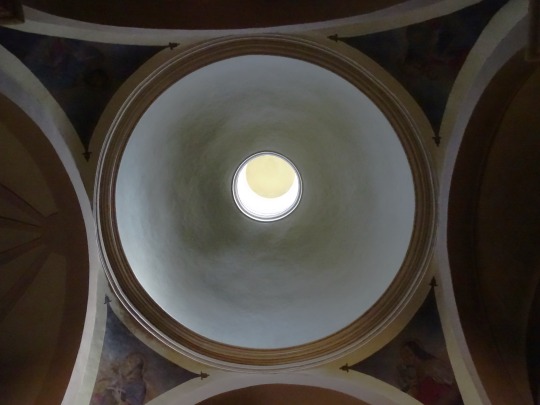

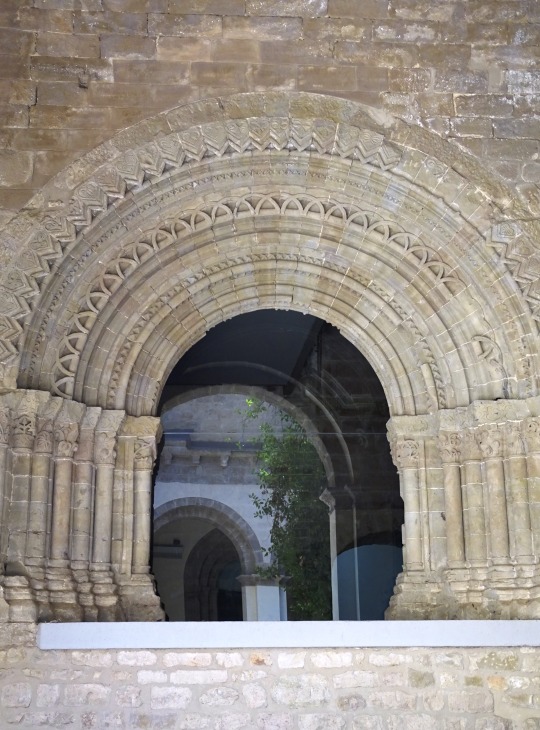





Solsona Cathedral, Spain (No. 6)
There is evidence of a pre-Romanesque temple dating 977. the Romanesque church was consecrated in 1070 and it is stated that it was “a most famous temple in the entire world”. From this time the three apses, the bell tower, some pieces from the cloister, the cellar and the canons’ dining hall, (these days used for different events) have been preserved.
The cathedral today is Gothic and it was begun at the end of the 13th century and finished in the 17th century and finished in the 17th century. On the left of the transept there is the chapel of Mercè with a Baroque altar from the artist Carles Morató. On the right there is the venerated image of la Marededéu del Claustre from the 12th century and catalogued as one of the most important Catalan Romanesque sculptures.
It is easy to imagine the upheaval that the creation of a bishopric in Solsona in 1593 meant for the beautiful medieval Collegiate Church of Santa Maria, which was now to become a cathedral, particularly in regard to renewal of ornamental elements and the making of new altarpieces.
THE HIGH ALTAR (DEDICATED TO THE VIRGIN MARY)
The high altar dedicated to the Virgin Mary was commissioned from the Majorcan sculptor Miquel Vidal (1634), but it was not completed, except for six large panels sculpted in low relief from the predella, which are conserved in the Solsona Diocesan and Regional Museum. Nor does anything remain of the second high altar, commissioned from Jacint Morató in 1730: the dreadful fire caused by Napoleon’s troops in 1810 destroyed it along with many other works. Following this disaster a new high altar was made (1854-1856), the third. However, it was short-lived, as it too was burnt during the Spanish Civil War. Fortunately, six of eight paintings by the distinguished Nazarene artist Claudi Lorenzale survived.
THE CHAPEL OF OUR LADY OF MERCY AND THE SACRISTY FURNISHINGS (TWO BAROQUE WORKS THAT SURVIVED THE FIRE OF 1810 AND THE SPANISH CIVIL WAR)
Only two sets of works from the modern period escaped the fire of 1810 and the later ravages of the Spanish Civil War on the cathedral. These are the Chapel of Our Lady of Mercy and the walnut cupboard and drawers in the canons’ sacristy. The first contains the dynamic altarpiece sculpted around 1750 by Carles Morató, although the sculptural elements were lost. The sacristy holds a beautiful cupboard with painted doors and the reliquary busts of Saint Victoria and Saint Secunda, of fine quality. Unfortunately, the artist is unknown. However we do know that the author of the colourful doors of the reliquary cupboard was Antoni Bordons.
THE CHAPEL OF OUR LADY OF THE CLOISTER
The Chapel of Our Lady of the Cloister (1727-1776), designed to house the prized Romanesque carving, was destroyed on several occasions. Its complex construction, which was also to have an altarpiece and mural paintings, was commissioned from Jacint and Carles Morató—who worked in collaboration with sculptor Josep Sunyer i Raurell. It disappeared due to damage incurred in 1810, 1822 and 1936, but from old descriptions one gathers that it must have been a most impressive example of Catalan Baroque.
OTHER NOTEWORTHY ELEMENTS FROM THE MODERN PERIOD
Elements that should not escape our notice are the modest baroque reredos at the foot of the nave, the work of Isidre Clusa, classical in style and decorated with naive reliefs showing from the life of Saint Martin, originally from the Church of Sant Martí de Riner, although it is disconcerting to see it now topped by a Saint Michael; and the fine groups of sculptures decorating the cathedral’s late eighteenth-century facades, with representations of ‘The Assumption of the Blessed Virgin Mary’ (1768) and ‘The Ecstasy of Saint Augustine’ (1780).
Source
#Cathedral of Santa María de Solsona#Cathedral of Solsona#España#Southern Europe#Nucli antic#travel#original photography#vacation#tourist attraction#landmark#architecture#cityscape#exterior#detail#old town#summer 2021#Northern Spain#interior#tree#courtyard
1 note
·
View note
Text
youtube
Giovanni Rovetta (1596-1668) - Madrigali concertati, Op. 2: IX. Le lagrime d’Erminia
Soloist: Josep Maria Martí Duran
Artist: Zachary Wilder, tenor
1 note
·
View note
Video
youtube
Rinaldo,, HWV 7a, Act 2: Lascia Ch’io Pianga (Arr. for Tiorba)
Josep Maria Martí Duran
thanks to @a-quiet-soliloquy
1 note
·
View note
Note
Hola! què són alguns bons llibres catalans o poesia? :)
Òbviament n'hi ha moltíssims pero alguns que a mi m'agraden personalment i que són moderns:
De poesia: Vicent Andrés Estellés, Miquel Martí i Pol, Maria Mercè Marçal, Josep Carner, Joan Maragall.
I poesia de la Renaixença a mi personalment m'agrada molt (💕Jacint Verdaguer💕) i teatre d'Àngel Guimerà però està escrit l'ortografia que s'utilitzava abans de la reforma de Pompeu Fabra i si encara estàs aprenent la llengua potser et costa. No és gaire diferent (a part de lo=el i algunes paraules) però l'ortografia és diferent i potser despista o et costa buscar paraules al diccionari.
Contes: Trajecte Final de Manuel de Pedrolo, qualsevol cosa de Pere Calders, El perquè de tot plegat de Quim Monzó, El cafè de la granota de Jesús Moncada.
Teatre que vagi bé de llegir: LA CANÇÓ DE LES BALANCES DE J.M. CARANDELL m'enamora aquesta obra, de debò 😍 però no crec que sigui gaire fàcil trobar-la si vius fora dels Països Catalans. Homes i no del Pedrolo no l'he llegida però sempre m'han dit que és una passada.
De novel·la n'hi ha moltíssims però els top moderns serien Jo confesso i Les veus del Pamano de Jaume Cabré, Mirall Trencat de Mercè Rodoreda (o moltes altres seves), diverses coses de l'Albert Sánchez Piñol (a molta gent li apassiona La pell freda però a mi personalment tampoc em va semblar per tant, la que tinc més ganes de llegir-me des de fa temps és Pandora al Congo però aviso que es veu que és una bogeria. I no puc no mencionar la gran obra mestra del Sánchez Piñol, Victus, tot i que la va escriure en castellà és un dels meus llibres preferits). També m'han recomanat molt les de Rafel Nadal.
I de novel·la juvenil el típic seria Jordi Sierra i Fabra, que en té algunes en català i d'altres en castellà. O per infantil-juvenil qualsevol cosa de Vaixell de Vapor.
Jo la veritat és que llegeixo relativament poca literatura catalana, pots trobar més coses al Twitter de la Institució de les Lletres Catalanes o de Catalan Culture, i alguns posts al tag #literatura de @useless-catalanfacts
11 notes
·
View notes
Text
INTRODUCTION TO BARCLEONA

The Casa de les Punxes or Casa Terradas, designed by Josep Puig i Cadafalch.

Casa Batlló - in the center of Barcelona. Designed by Antoni Gaudí. It is considered one of his masterpieces. A remodel of a previously built house, it was redesigned in 1904 by Gaudí and has been refurbished several times after that. The local name for the building is Casa dels ossos (House of Bones), as it has a visceral, skeletal organic quality.
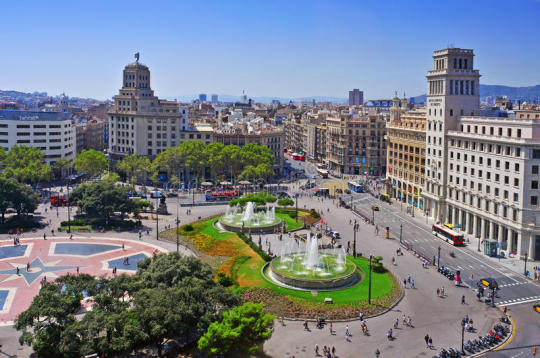
Plaça Catalunya - The plaza occupies an area of about 50,000 square metres. It is especially known for its fountains and statues, its proximity to some of Barcelona's most popular attractions, and the flocks of pigeons that gather in the centre.

La Rambla - is a street in central Barcelona. A tree-lined pedestrian street, it stretches for 1.2 kilometres connecting Plaça de Catalunya in the centre with the Christopher Columbus Monument at Port Vell.
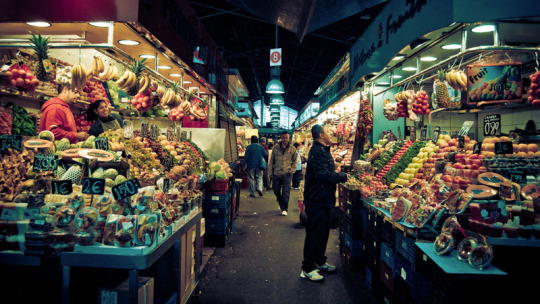
La Boqueria food market - is a large public market in the Ciudad Vieja district of Barcelona, Catalonia, Spain, and one of the city's foremost tourist landmarks, with an entrance from La Rambla, not far from the Liceo, Barcelona's opera house.

Gothic Quarter - The charming Gothic Quarter, or Barri Gòtic, has narrow medieval streets filled with trendy bars, clubs and Catalan restaurants. The Museu d'Història de Barcelona shows remains of the Roman city. Artisans sell leather and jewellery near the Cathedral of Barcelona, while flower stalls and street-food vendors line busy avenue La Rambla. The Plaça del Pi, named after the adjacent Gothic church, hosts a weekend art market.
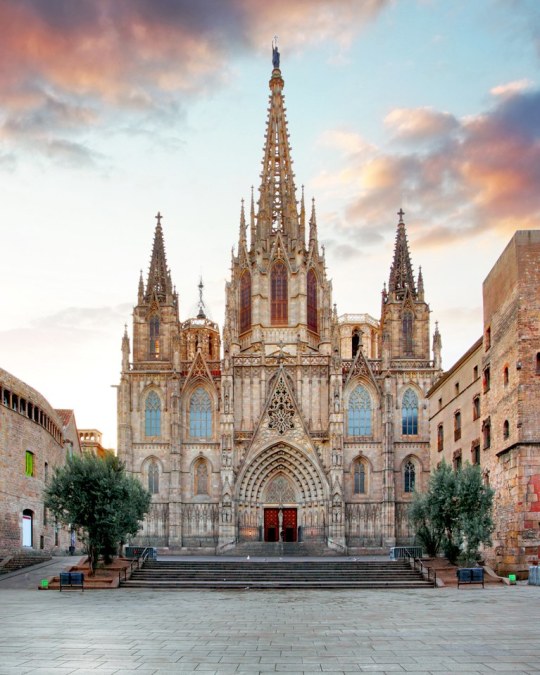
Barcelona Cathedral - The Cathedral of the Holy Cross and Saint Eulalia, also known as Barcelona Cathedral, is the Gothic cathedral and seat of the Archbishop of Barcelona, Catalonia, Spain. The cathedral was constructed from the thirteenth to fifteenth centuries, with the principal work done in the fourteenth century.

Basilica of Santa Maria del Mar - is a church in the Ribera district of Barcelona, Spain, built between 1329 and 1383 at the height of Principality of Catalonia's maritime and mercantile preeminence. It is an outstanding example of Catalan Gothic, with a purity and unity of style that is very unusual in large medieval buildings.
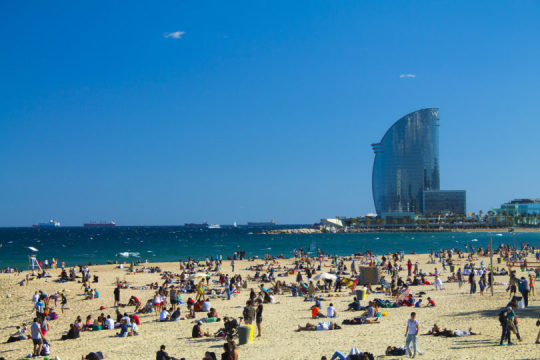
Beach

Park Güell - is a public park system composed of gardens and architectonic elements located on Carmel Hill, in Barcelona, Catalonia, Spain. Park Güell is the reflection of Gaudí's artistic plenitude, which belongs to his naturalist phase. During this period, the architect perfected his personal style through inspiration from organic shapes.
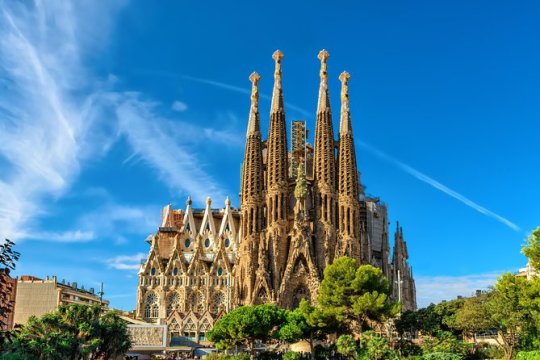


La Sagrada Familia - is a large unfinished Roman Catholic minor basilica in Barcelona, Catalonia, Spain. Designed by Catalan architect Antoni Gaudí. On 19 March 1882, construction of the Sagrada Família began under architect Francisco de Paula del Villar. In 1883, when Villar resigned, Gaudí took over as chief architect, transforming the project with his architectural and engineering style, combining Gothic and curvilinear Art Nouveau forms.
Gaudí devoted the remainder of his life to the project, and he is buried in the crypt. At the time of his death in 1926, less than a quarter of the project was complete. Relying solely on private donations, the Sagrada Família's construction progressed slowly and was interrupted by the Spanish Civil War. In July 1936, revolutionaries set fire to the crypt and broke their way into the workshop, partially destroying Gaudí's original plans, drawings and plaster models, which led to 16 years work to piece together the fragments of the master model.

Casa Milà - popularly known as La Pedrera or "The stone quarry", a reference to its unconventional rough-hewn appearance, is a modernist building. It was the last private residence designed by architect Antoni Gaudí and was built between 1906 and 1912. The building was commissioned in 1906 by Pere Milà [ca; es] and his wife Roser Segimon [ca; es]. At the time, it was controversial because of its undulating stone facade, twisting wrought iron balconies and designed by Josep Maria Jujol. Several structural innovations include a self-supporting stone façade, and a free-plan floor, underground garage and the spectacular terrace on the roof.

Fundació Joan Miró - is a museum of modern art honoring Joan Miró. His connection to the land and his interest in everyday objects and in the natural environment formed the backdrop to some of his technical and formal research. Self-contained in his manners and public expressions, it is through art that Joan Miró showed his rebelliousness and a strong sensitivity to the political and social events around him.

Montjuïc Castle - is an old military fortress, with roots dating back from 1640. In the last 350 years Montjuïc Castle has played a decisive role in the history of Barcelona, becoming a symbol after the Catalan defeat to Spain in 1714. Since then the Montjuïc cannons have bombarded the city and its citizens on various occasions, and Montjuïc has been used as a prison and torture centre repeatedly for three centuries.The castle is infamous in Catalan history books because of its role in the civil war from 1936 to 1939 when both sides of the conflict imprisoned, tortured and shot political prisoners at Montjuïc, among them Lluís Companys, who was the president of the Generalitat of Catalonia during the Spanish Civil War. Companys was executed upon orders from the Spanish State at Montjuïc Castle in 1940.

Barcelona Pavilion - designed by Ludwig Mies van der Rohe and Lilly Reich, was the German Pavilion for the 1929 International Exposition in Barcelona, Spain. The pavilion for the International Exhibition was supposed to represent the new Weimar Germany: democratic, culturally progressive, prospering, and thoroughly pacifist; a self-portrait through architecture.

Jardí Botànic de Barcelona (Botanic Garden) - set amongst a number of stadiums used in the Summer Olympic Games of 1992. Although a botanical garden had been established in Barcelona as early as 1888, the current gardens date from 1999. “After only a few minutes of walking around the Botanic Gardens I felt I had entered a Zen monastery, calm and peace and cleanliness.”

Bibliotec Sant Antoni (Joan Oliver) - The library, named in honor of playwright and poet Joan Oliver, came about through a competition won by RCR in 2005. The architects sought to make the street more dynamic and to open up the inner courtyard for public use, as well as to create a library. The glass-enclosed main reading room is raised up and set between the two lateral wings of the library, which allow light to filter through from both sides, forming a gateway into the public space. This courtyard, with its trees, earthen paving, sitting areas, games, etc. can be understood as an extension of the library’s reading rooms.
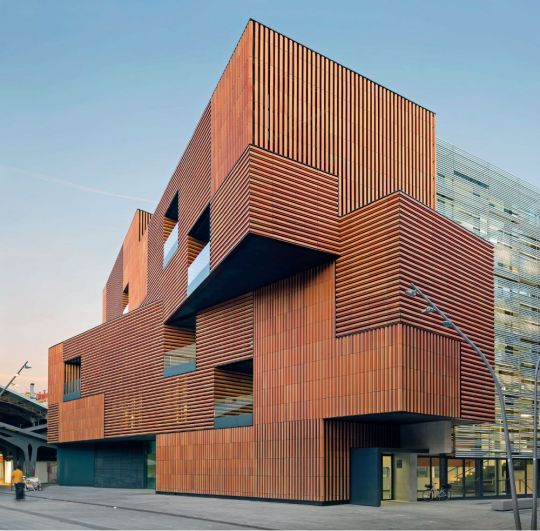

Plaza de la Gardunya - Escuela Massana (school of Art and Design) is part of the long process of urban transformation of Plaza de la Gardunya, located in Barcelona’s historical centre. the effort put into this project responds to the desire of creating a bright interior space with open connecting spaces whilst, at the same time, the exterior of the building remains in harmony with the urban fabric. The building showcases different volumetries and façade textures as a response to the surrounding buildings. With the aim of giving it a more unique and sculptural look and, at the same time, make it more airy, the section that faces onto the square is divided into two sections slightly rotated, creating terraces.
The school, which is an institution that welcomes future artisans and designers, is clad in a ceramic material of large dimensions, made in an artisanal manner and unique to our building. This helped to give it its unique character and highlights the sculptural nature of the building, whilst protecting the privacy of the students.
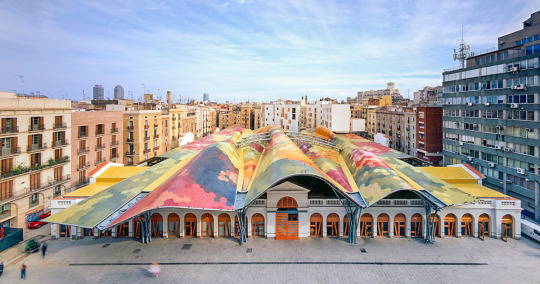
Santa Caterina Food Market - Buzzy market featuring a unique, wavy roof & colourful mosaics, with a variety of vendors & eateries. A competition was opened to restore the Santa Caterina city market located in the old quarter of Barcelona in 1997. EMBT won the bid with a proposal that aimed at incorporating the extreme complexity of the setting itself by creating a commercial market complemented by a residential zone and public spaces that integrated all the activities of the neighbourhood.

22@ District - is the corporative name given to an urban renewal area in Barcelona's formerly industrial area of Poblenou, in the district of Sant Martí, nicknamed "the Catalan Manchester" in the 19th century. Its aim is to convert Poblenou into the city's technological and innovation district, as well as to increase leisure and residential spaces. Centered on Plaça de les Glòries Catalanes, it is part of one of Europe's biggest urban regeneration schemes, begun during the 2000s and still ongoing.

The Museu del Disseny de Barcelona - is a new center of Barcelona's Institute of Culture, acting as a museum and laboratory. It focuses on 4 branches or design disciplines: space design, product design, information design and fashion. Barcelona is a city historically linked to design. It was decided to build a single space in which locate all collections and endowments existing in Barcelona related to the world of design, and Oriol Bohigas commissioned the construction of a building in the Plaça de les Glòries.

Torre Glòries - is a 38-story skyscraper which marks the gateway to the new technological district of Barcelona. It was designed by French architect Jean Nouvel in association with the Spanish firm b720 Fermín Vázquez Arquitectos and built by Dragados. Torre Agbar is intended to recall the shape of a geyser rising into the air. It was inspired by Montserrat, a mountain near Barcelona. In an interview, he described the tower as having a phallic character.

Edifici Mediatic - Enric Ruiz-Geli doesn’t emphasise the media impact of his futuristic building, but instead its energy efficiency. Extensive studies formed the basis for the parametric design where the award-winning steel frame is on the outside and the interior offers flexible use of space. The patented cushions made of ETFE membranes are controllable, allowing the different façades to be insulated, opened, or shaded as needed. Edifici MediaTIC is a prime example of forward-looking architecture.
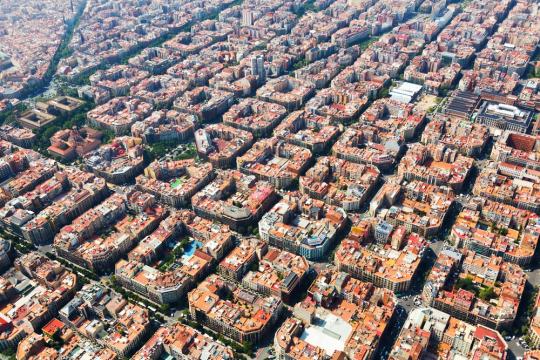
Urban Superblocks - Barcelona’s radical plan to take back streets from cars. A vision for a different way of living in the 21st century, one that steps back from many of the mistakes of the auto-besotted 20th century, refocusing on health and community. It is a bigger and more ambitious city plan than anything being discussed in America and, more important, a plan that is actually being implemented, with a few solid pilot projects behind it, a list of lessons learned, and a half-dozen new projects in the works.
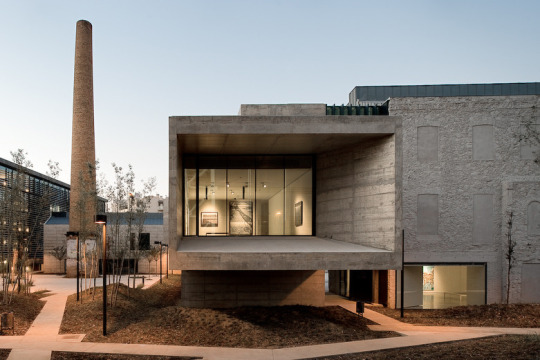
Can Framis Museum - Is an art center devoted to the promotion of contemporary Catalan painting. Located in the old Can Framis factory complex, the museum displays more than 250 paintings from the sixties to the present made by artists born or currently living in Catalonia.
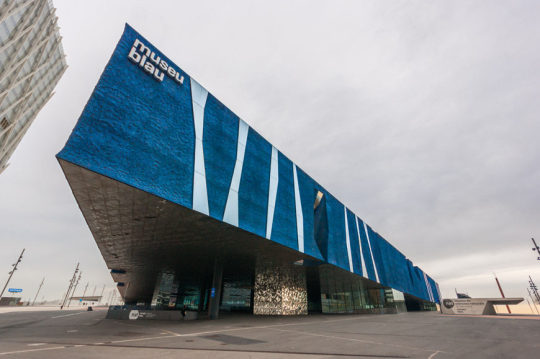
Museu Blau (Science Museum) – By Herzon De Meuron “We look for materials which are as intelligent, versatile and complex as natural phenomena, in other words materials which don't just appeal to the eyes of the astounded art critic, but are also really efficient and appeal to all our senses.” – Jacques Herzog. A triangular mass of gray-blue concrete punctured and split in places to reveal the contrasting use of reflective planes.


Walden 7 - is an apartment building designed by Ricardo Bofill's team and located close to Barcelona, in Catalonia. It was built in 1975. The original project includes 446 residences. The original exterior façade was covered with small, red ceramic tiles backed with the wrong adhesive, creating a pedestrian hazard as the tiles fell off the building.
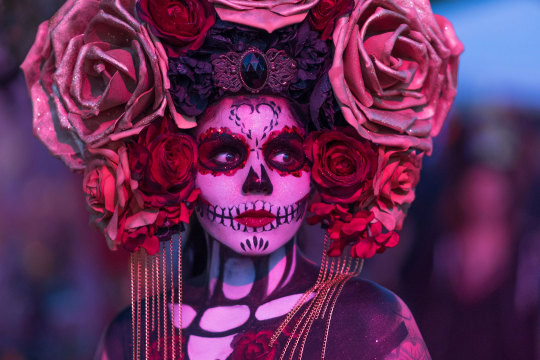
The day of the Dead - is a Mexican holiday celebrated throughout Mexico, and by people of Mexican heritage elsewhere. The holiday involves family and friends gathering to pray for and remember friends and family members who have died, and helping support their spiritual journey. In Mexican culture, death is viewed as a natural part of the human cycle. Mexicans view it not as a day of sadness but as a day of celebration because their loved ones awake and celebrate with them. Mexican cempasúchil (marigold) is the traditional flower used to honor the dead.


Igualada Cemetery - Designed by the architects Enric Miralles and Carme Pinós after winning an architectural competition in 1984. the cemetery became widely regarded as one of the most poetic works of twentieth century Catalan architecture. to explore poetic ideas regarding the acceptance of the cycle of life to enable a link between the past, the present, and the future. A processional "street" descends from the entrance, where crossed, rusting, steel poles doubling as gates and likened to the crosses at Calvary, proclaim the start of a winding pathway towards the burial area. The route is lined with repeatable concrete loculi forming retaining walls and the floor of the path has railway sleepers set into its concrete surface.The intention was to bring the bereaved down into the landscape to a 'city of the dead', an in between place where the dead and the living are brought closer together. The spaces are designed to provoke thoughts and memories.
2 notes
·
View notes
Quote
Favorite tweets: 🧾✍️La Lluïsa Bonal, presidenta de l'Associació de Veïns i Amics de Calella ens dona els detalls de la 4a edició d'aquest premi que enguany tindrà com a jurat a Mar Bosch, Josep Maria @fonalleras , Núria Martí i Guillem Terribas @FJosepPla @h10hotels https://t.co/2e8xP51t7i— Radio Palafrugell (@RPalafrugellFM) February 25, 2019
http://twitter.com/RPalafrugellFM
1 note
·
View note
Text
sunrise serenity – jmm21
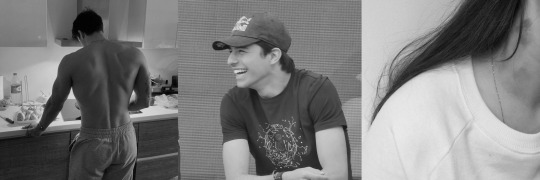
your first morning with pepe, after your first night together...
genre: fluff + a little little suggestive
pairing: reader x pepe marti
warnings: hmmmm a few suggestive mentions but that's it i think
word count: 1.3k (like, exactly 1300.... kinda freaky actually)
requested: again not rlly lol but there have been asks abt more pepe stuff soooo :)
author's note: hehe a little more pepe love <33 idk thinking about waking up and seeing his gorgeous tanned back- 😶 it makes me freak a little ngl. anyway. hope u all have a lovely weekend <3 also i *just* realized that i forgot to use any spanish in this lol hope u still enjoy :)
f2/f3 masterlist
the room is so light, way too light, when your eyes finally flutter open. keeping them open is a constant battle, with the rays of sunlight peeking past the blinds stinging like you're staring straight into the sun itself. you just want to roll around and bury your face into the pillow underneath you, but something about the feeling of the pillow against your skin feels unfamiliar... and that's when you realize.
right. this isn't your own bed, or your own apartment – it's pepe's.
your eyes are fully open by now, butterflies waking up in the pit of your stomach as they roam across the room. seeing a pile of your boyfriend's clothes folded up on a nearby chair, the pictures of his family and friends hung up on the walls, all of the other little quirks that just scream pepe; it's all so unfamiliar, yet so comforting and heartwarming.
this isn't your first time being in this room, but it's the first time you see it in this light. the first time you wake up in this bed, the first time you're in his room at this hour of the day. you and pepe have been dating for a few months now, and you've been planning for the first time you stay overnight in his apartment for quite a while. last night, it was finally time – and you've probably never had as good of a night's sleep before in your life. from the fact that he cooked you a very fancy dinner, to the way that his fingers danced across your skin when you lied next to him in bed; everything was just perfect. and going grocery shopping together, helping each other clean the dishes, brushing your teeth side by side…
it was hard not to imagine what it would feel like to spend all your days like this. it all became so real, so domestic, and you never want to go back.
the sound of pans clinging together along with a quiet swear reaches your ears and you can't help but let out a chuckle, finally pushing yourself up to sit on the edge of the bed. you reach for the first piece of clothing you can see, which turns out to be the oversized shirt pepe wore last night, and you pull it over your head before rising from the bed. your body is still a bit sore, but the sweet aroma of pancakes meeting your nose gives you the energy to keep going.
you stop in your tracks when you catch a glimpse of yourself in the mirror right by pepe's bedroom door – or, more exactly, the sight of your neck.
the trail of lovebites your boyfriend left stretches from your jaw and down under the collar of your shirt, and you know you'd be met by many more if you looked underneath it. the artwork is so mesmerizing that you have to shake your head to bring yourself out of your trance, slightly embarrassed by the way your stomach flips just at the sight of some hickeys.
when you eventually make your way into the kitchen and your eyes land on your boyfriend, you almost swoon. the sight of him from behind is just gorgeous; his sweatpants hanging low on his hips and his tanned, broad back practically calling out for you to come and kiss it. you're not sure if he's heard your footsteps or if he can just sense your presence, but pepe shifts slightly after a few moments. "good morning."
"good morning," you cheer back, beginning to stroll over to him. when he looks over his shoulder and takes in the sight of you, the way the hem of his shirt reaches the middle of your thigh and your slightly messy bedhead, a little laugh slips past his lips. your eyebrows pinch together. "what?"
"nothing," he says, arm wrapping around your shoulders once you reach his side. "you're just cute, that's all."
you coo playfully at him, hand reaching up to cup the side of his face before getting on your tippytoes. pepe meets you halfway, lips sealing against yours with ease.
"slept well?" he asks when you pull apart, his hand dropping down to your hip and pulling you in closer. his other hand works on flipping the pancake in the pan, a hint of a smile on his lips as if he already knows the answer.
"really well. you?"
pepe nods before leaning his head against yours. "you were out like a light yesterday," he says with another chuckle. "i swear, the second your head hit the pillow..."
you let out a groan. "i'm sorry."
"no, don't apologize!" he interjects immediately. "we had a long day. you looked so peaceful, it was adorable." he pulls his head away, looking down at you with a grin. "seeing that calm side of you was interesting, honestly. it's a far cry from how you are when you're awake, i'll tell you that."
"hey!"
your exclaim is followed by a press of your elbow into his side, which he answers with a quick kiss to your temple. you wriggle out of his embrace, to which his eyebrows shoot up – but when he watches you push yourself up to sit atop the counter next to the stove, legs dangling from the edge and feet swinging in the air, he relaxes again.
pepe places the pancake on a plate by your side, before pouring a thin layer of batter into the pan. "do you usually have pancakes for breakfast?" you tease, biting back the smile that wants to spread across your lips when your boyfriend's free hand lands on your knee.
he shakes his head, thumb drawing circles into your skin while he spreads the batter out evenly in the pan. "i wish." there are a few moments of silence before he turns to you, a slight smirk on his face. "though, i know something i'd rather have for breakfast every morning..."
tender fingers brush a few strands of hair out of your face and behind your ear before resting right below your jaw as pepe leans in, nose nudging yours to draw out a giggle from you. and then he kisses you, his smile pressed against yours as your eyes flutter closed. your hands come up to rest on his shoulders, the feeling of his warm skin and the strong muscles beneath it sending a shiver down your spine.
pepe tastes faintly of toothpaste with just a hint of sweetness, as if he's already had a sample of a pancake. when his lips part, yours follow his lead, and you can't help the sound that leaves the back of your throat as he licks into your mouth. your arms wrap around his neck for stability and his hands reach for your waist, pulling you forward and into him.
when his kisses begin to travel along your cheek, your legs wrap around him almost out of habit. you sigh, the way his lips move down the side of your neck making your head spin. but your skin is still so sensitive, and the little whine that escapes from your mouth has him pulling back. he blinks down at you, but it doesn't take long before he understands.
one of his fingers traces along the marks he's left down your neck, a content and proud smile on his lips. "i'm sorry," he says, though you both know there's no sincerity in the apology.
"don't be, they look good," you start, leaning forward to seal your lips again. "and they felt really good, too."
the groan that vibrates from his chest has you smiling against him yet again. "you can't just say that. you're gonna have to stay over way more often now."
"deal."
#extra: “pepe i think the pancake is burning” “i couldn't care less”#f1#f2#formula two#formula 2#pepe marti#pepe martí#josep maria marti#pepe marti fluff#pepe marti x reader#pepe marti x you#pepe marti x yn#pepe marti x y/n#f2 x yn#f2 x y/n#f2 x you#f2 x reader#f2 fluff#pepe marti suggestive#f2 suggestive
74 notes
·
View notes
Photo

Quina veritat!!! (en Parque de Josep Maria Serra Martí) https://www.instagram.com/p/CN-0k8JBxzAyi_OqeZwTE8wPU1oYzthSCcIYu40/?igshid=i98kgbqen8fm
0 notes
Photo
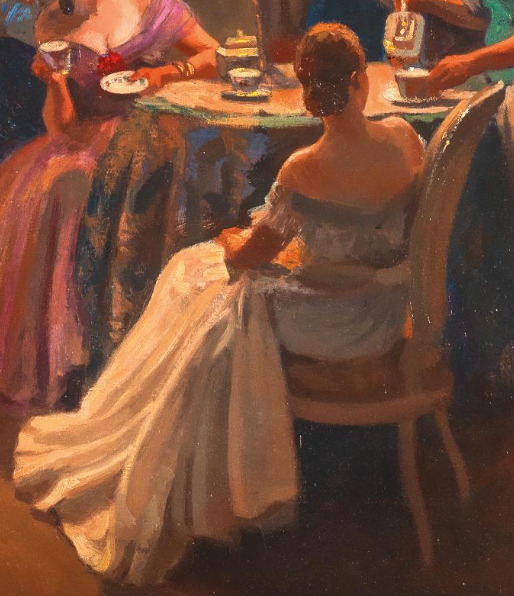
Josep Maria de Martí Garcés de Marcilla - An Evening Party (detail)
102 notes
·
View notes
Text
Entrevista a Roland Mansel de Eurotime
Entrevista a Roland Mansel de Eurotime
Después de haber conocido a Josep María Martí de Industrial Martí de Relojería parece ser que esta sección que comenzó como entrevistas centradas en la relojería española se va ampliando. Si la norma se rompió con Jose Maria Ramos Amatriain de Raymond Weil, que pese a estar ubicado en la central de la firma en Suiza es español, o a Matthew Cule de CuleM Watches que aunque galés está afincado en…

View On WordPress
0 notes
Link
Divendres 23 d'octubre
ARTESANIA I CONTEMPORANEÏTAT
12:00h Artesania i Societat: Diàlegs sobre El paper de l’artesania en el món postcovid-19: amb els Premis Nacionals d’Artesania Albert Blancafort, mestre artesà orguener; Martí Pascual, paperer (fill de Josep Maria Pascual Arnella i continuador de l’empresa); Luesma-Vega, mestres artesans vidriers; Teresa Rosa, mestra artesana teixidora.
Moderador: Sr. Ricard Planas – Director de BonArt
ARTESANIA I TALENT JOVE
17:00h Artesania i Talent jove: 5 creatius catalans vinculats al programa Talent Jove d’Artesania Catalunya ens presenten les seves noves maneres de desenvolupar l’ofici artesà
Coudre Studio - Artesania digital
Nai Factory – Reolivar - Sostenibilitat
Marc Sallent – Artesania digital robòtica
Josep Safont - Art tèxtil - tapissos
Joel Miñana - Il·lustrador
0 notes
Text
The Catalonia Crisis Also Divides Spain’s Media
By Raphael Minder, NY Times, Oct. 25, 2017
BARCELONA, Spain--If Spain has not split in two, its media almost has. There, the struggle over the restive region of Catalonia plays out in parallel universes.
From Madrid, the region’s secessionist drive is portrayed as an act of sedition deserving to be put down. In Catalonia, the narrative is more about aspirations for self-determination by a people with a distinct identity.
“We’ve got parallel story lines led by extremist representations that are filled with clichés,” said Enric Hernàndez, the editor of the Barcelona-based newspaper El Periódico.
The central government in Madrid may soon try to align those narratives by taking charge of Catalonia’s public broadcasters, Catalunya Radio and its larger sister television company, TV3.
The move could come as soon as this weekend, after another tense and unpredictable round in the standoff. The Catalan Parliament will meet Thursday to review a possible declaration of independence, a day before the Spanish Senate is expected to approve a raft of emergency measures under Article 155 of the Constitution to give Madrid direct control over the region.
Among those measures, Prime Minister Mariano Rajoy wants to guarantee “truthful, objective and balanced” coverage in Catalonia.
Such a media takeover would be a direct strike at Catalan institutions that have been instrumental in promoting a separate culture and language. It would also put the Spanish government on a path toward reducing media freedom in ways that worry many Spaniards, even beyond Catalonia.
But the prospect has left Catalan citizens and journalists especially anxious. Not least among them is Vicent Sanchis, the general manager of TV3, who said it would return Spain to “a dark period,” when the dictatorship of Gen. Francisco Franco censored information.
“When a government says that it will take charge of a television station, I know that this is something very serious,” said Mr. Sanchis, who wrote his doctoral thesis about Franco’s censorship.
Since last weekend, the Catalan broadcaster has received messages of solidarity from the staff committees of rival television stations, including Spanish national television, where some employees have been openly criticizing their own coverage of the conflict.
Ignacio Escolar, the editor of eldiario.es, a Madrid-based online publication, wrote that TV3 “isn’t my model of public television,” but that he was shocked by what he described as the cynicism of Mr. Rajoy’s government in demanding “truthful” coverage.
Spain’s national television station, which is led by a central government appointee, runs news bulletins that have become “obscenely manipulated,” Mr. Escolar claimed.
Perhaps the outlet with the most at stake for Catalans is TV3, which was begun in 1983 as an ambitious regional television project that Catalonia’s leader at the time, Jordi Pujol, used to reinstall the Catalan language, which was banned under Franco’s dictatorship.
Since then, TV3 has spawned a generation of Catalan producers who built their own media companies, in both Catalonia and the rest of Spain.
“TV3 was a decisive element in the construction of the new Catalan identity and society that Pujol wanted, but it also became part of a powerful system of clientelism,” said Josep Maria Martí Font, a Catalan journalist and former foreign correspondent for the newspaper El País.
Antonio García Ferreras, who runs a politics show on La Sexta, a Madrid-based television channel, argued that Catalonia’s independence movement had been “light years ahead” of its opponents, in terms of promoting its separatist project on every possible platform.
“The same ideology has been sold in every clever way possible, including on TV3’s children and food shows,” Mr. García Ferreras claimed. “I think the independence movement is perhaps now a victim of its communications success, having made people really believe that independence could soon become a reality.”
In Madrid, on the other hand, he added, “we’re now seeing a large part of the media respond in a way that is forceful but also disrespectful, building up an audience that seems happy to hear denigrating views about Catalonia.”
As the standoff has reached a boiling point, some columnists and pundits have resigned or been pushed aside, while warning against mounting extremism in the news media.
This month, Joan López Alegre, a Catalan university professor of communications, left alongside another regular pundit on TV3, signing off with an opinion article in El País headlined “Farewell to the circus of hatred.”
Mr. López Alegre argued in an interview that it would not be “illogical” for Mr. Rajoy’s government to take control of a Catalan broadcaster that had been “pushing not only a political project against Madrid, but also working to create a conflict within Catalan society, using public money.”
The conflict has put journalists on both sides under huge pressure, also because it often feels extremely personal.
Susanna Griso is a journalist who comes from Barcelona but has worked for the past 20 years in Madrid for the Antena 3 channel. She recently choked back tears on live television while arguing with a Catalan mayor about whether Spanish police officers should be stationed in her town.
“These are extreme circumstances when you’re giving opinions about an issue that affects your family and those you love,” Ms. Griso said. “From the media coverage, it often now looks as if we’re already living in different states, but real life is a lot more complicated than that.”
Mr. Martí Font, the former El País journalist, noted that the gap in the narrative was “galactic” on social media, where several videos have gone viral showing Spanish police officers and officials either celebrating and insulting Catalans or receiving abuse from them.
He forecast that Mr. Rajoy’s government would use Article 155 to squeeze the Catalan broadcaster financially rather than risk the controversial removal of key staff members.
“Money talks and it’s easier to turn off the tap to change an editorial line rather than enforce censorship, as we’ve seen with the problems of some newspapers dealing with their debt holders,” he said.
Mr. Sanchis, the general manager of TV3, acknowledged that his company could not survive without public money. The Catalan government pays 230 million euros, or about $272 million, of TV3’s annual €300 million budget.
Madrid has already used the stick to force Catalan media into line.
Last month, it warned that it would prosecute media companies that advertised the independence referendum. Ara, a Catalan newspaper that is committed to holding an independence referendum, heeded the warning.
“Some readers were unhappy, but we took this decision not only to protect our newspaper but also to stay sound and alive now,” said Salvador Garcia Ruiz, Ara’s chief executive.
1 note
·
View note